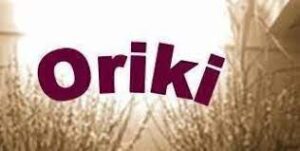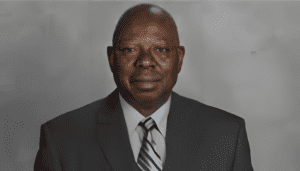Averting deaths on Nigeria’s inland waterways
John Davis (not real name) was a promising young man. He was so brilliant that he passed his university matriculation exam in one sitting, gaining admission to study one of the most coveted courses, medicine.
In addition to his academic brilliance, John also excels in sports. He is so good that he was selected to represent his school in the medical students game in Calabar, Cross River, he never returned to his parents and other loved ones.
John was among the casualties of the recent cruise boat mishap which claimed the lives of two other medical students.
The students were in the Cross River capital to compete for honours but their lives were brutally cut short when their boat capsized at Marina Resort waterways in Calabar.
The students, two from Ahmadu Bello University, Zaria and one from the University of Uyo, Akwa Ibom State, were in the Cross River capital city for Nigeria Medical Students games.
In a swift reaction, Gov. Bassey Otu ordered that all activities in the Marina Resort be suspended until further notice.
In a statement by his Chief Press Secretary, Mr Emmanuel Ogbeche, Otu also ordered a full investigation into the incident.
The leadership of Nigerian Medical Students Association (NIMSA) blamed the management of Marina Resort Calabar, for the accident.
“This ugly, avoidable and extremely traumatizing incident causing so much anguish to the medical students community nationwide was as a result of negligence.
“It is as a result of incompetence and the lackadaisical attitude of the crew members and the management of Marina Resort”, said Egim Egbe, the national president of NIMSA, as he addressed jouralists at the resort.
On the waters between Niger and Kwara, no fewer than 100 hundred wedding guests, including a father and his four children met their untimely death as their boat capsized on their way home after the wedding ceremony.
The Chief of Kpada in Patigi, Kwara,Abdul Gana Lukpada, told the media that some stranded wedding guests had resorted to cross the river from Egboti village in Niger State to Kpada in a boat, as heavy rains caused the roads in the area to be flooded.
In January no fewer than 20 farmers were reported dead after a boat carrying about 100 farmers capsized in the Koko/Besse Local Government Area of Kebbi State.
The police spokesman for the state, DSP Nafiu Abubakar, confirmed the accident.
The Chairman of the Koko/Besse LGA, Alhaji Yahaya Bello, said that he was aware of the accident.
He said it occurred at night when a rickety boat carried more than 100 rice farmers to Samanaji, a riverine community in the area.
In May the media reported that 15 persons were feared dead, after a boat carrying many passengers capsized in Shagari Dam, Sokoto State.
According to eyewitnesses, the occupants of the boat were crossing the dam through Lambara village to Shagari when the incident happened.
Media reports quoted the Chairman of Shagari Local Government Area, Alhaji Aliyu Dantani, as confirming the accident.
In Nigeria, water transportation has been a major source movement of people and goods in the riverine areas and ocean coast cities of Lagos, and many others in the Niger Delta region for centuries.
The different types of transportation are associated with different types of risks such as road accident, plane crash, train derailment and boat/ship mishaps.
Debate has raged on which form of transport is the safest. While many argue that it is rail, others say air transportation remains the safest while to some others, it is water.
While the argument rages, Nigeria’s inland water transportation is taking a hit as shown in the series of accidents as highlighted above.
Given the huge population of Nigerians whose daily lives and activities involve water transportation, it was expected that actors in the sector will take appropriate steps to ensure that it is safe.
Data from Nigeria Watch, which project monitors lethal violence, conflicts, and human security in Nigeria showed that no fewer than 1,607 lives were lost in 180 boat mishaps between June 2006 and May 2015.
This figure will pale into insignificance if the water transportation accident continues at the rate it is going.
Maritime experts say many factors, both human and natural, are responsible for the recurring boat mishaps in the country.
Some of the factors include use of rickety boats and ferries, overloading, night journeys, careless piloting and non-adherence to safety standards, including absence of life jackets.
Experts have for long agitated for special attention to make water transportation in the country safe, organised in line with global best practices.
The Federal Government had responded to the demand to make the water ways safe for navigation through various policies and institutions.
For instance it set up the National Inland Waterways Authority (NIWA) with headquarters in Lokoja, Kogi.
It was established through Act Cap 47, Laws of the Federation of Nigeria (LFN), 2004, then degree No 13 of 1997.
It had hitherto existed as Waterways Department of the Federal Ministry of Transport. Its main responsibility is to improve develop the country’s inland waterways for navigation.
Many Nigeria contend that the authority has not lived up to expectations, an accusation it denies,
The Head of Press and Public Affairs of NIWA, Mr Jibril Darda’u, told the News Agency of Nigeria (NAN) that the authority had been doing its best to deliver on expectations and mandates.
Darda’u said NIWA with George Moghalu as Managing Director has commenced the training and certification of boat drivers nationwide.
He also said that the authority had engaged in in regular safety awareness and sensitisation campaigns across the country.
According to him, this is in addition to regular security and compliance patrols on the waterways by the team of NIWA police.
“NIWA has established nine search and rescue stations in Lagos, Lokoja, Port Harcourt, Yauri, New Bussa among others for timely rescue operations.
“The authority has standardised its inspection of vessels to ensure standard and safety compliance, including determining the River worthiness of the vessels before registration and permit are given.
“It has also deployed its personnel to various loading terminals to provide pre-loading safety talk to passengers and prevent overloading and night sailing as well as the provision of life jacket to boats” he said.
Another Federal Government agency involved in sanitising the waterways is the Hydropower Producing Areas Development Commission (HYPPADEC).
The commission also denies allegations that it has failed to deliver on its mandates.
The commission’s Head of Press and Public Affairs, Mr Nura Tanko-Wakili said it has commenced the clearance of water logs in the Shiroro, Kainji and Jenna lakes to ease the movement of boats.
Tanko-Wakili said the commission was partnering NIWA to educating stakeholders and the general public on safety guides and use of life jackets.
“We are sensitising the boat and jetty managers on the dos and donts of water transportation and the need to avoid overloading and night journeys.
“By 6.00pm movements on waterways are supposed to stop as the boats have no navigation equipment and proper lightings.
“Some of them have been operating for over 30 years and they are not even aware of the importance of life jackets, while some don’t want to use them because of some beliefs,”the HYPPADEC spokesman said.
According to him, as part of its intervention, the commission has distributed 12,500 life jackets to communities and boat operators to encourage safe travels on waterways.
“A life jacket has a six hours floating capacity within which a victim can be rescued in the event of a boat mishap,” he said.
Although the agencies say they are doing their best, it seems increasing cases of accidents contradict their claims.
Experts say they have to redouble their efforts in several areas of supervision such as meting out appropriate punishment to firms or individuals whose boats are involved in accidents caused by human error.
They say the agencies have to engage the services of more maritime experts within their fold as well as enhance their partnership with relevant agencies such as those involved in weather forecasting.
They also advise the dredging of rivers as well as proper funding of the agencies involved in inland waterways regulation and supervision.




